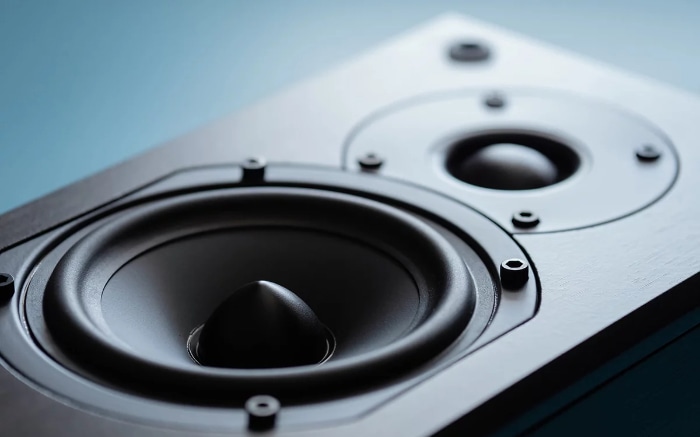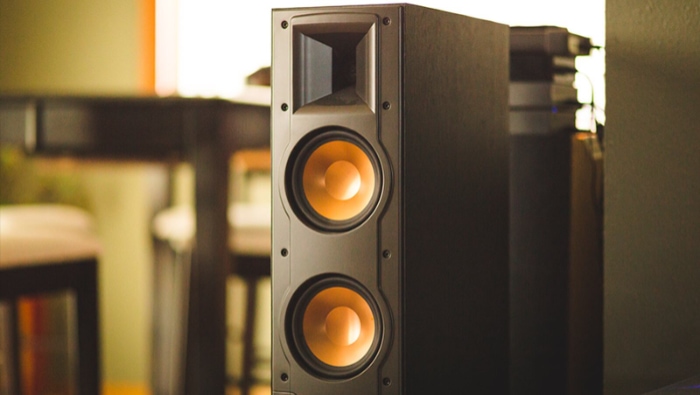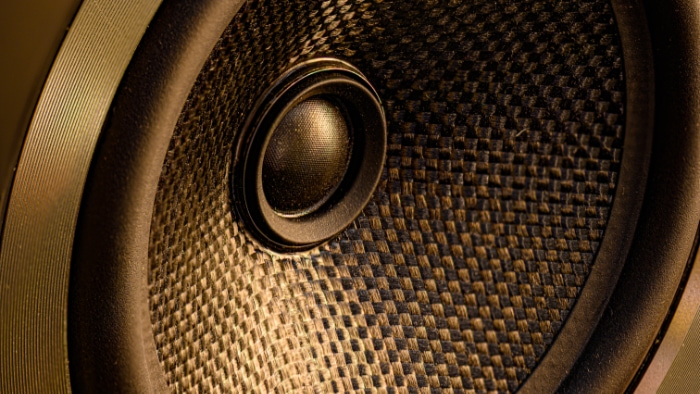Dolby Digital vs. PCM: Decoding the Best Sound

Audio quality profoundly shapes our experiences with movies, music, and games. High-quality sound can transport us into the heart of a movie's action or the depths of a musical performance.
This brings us to an intriguing comparison between two major audio formats that dominate our listening experiences: Dolby Digital and PCM (Pulse Code Modulation). Each format offers unique features and caters to different aspects of sound reproduction.
Basic Concepts of Audio Formats
Audio formats are essentially the language through which sound is recorded, stored, and transmitted. From the music on your phone to the surround sound in theaters, every auditory experience is shaped by the underlying audio format.
Definition of Audio Formats
Audio formats refer to the methods used to encode and store sound information. When sound is recorded, it needs to be converted into a format that can be easily stored and reproduced.
This involves either analog or digital processes. Analog formats store sound waves in a physical medium like vinyl records or magnetic tape, while digital formats convert these sound waves into digital data that can be stored on various devices like computers, CDs, or streaming services.
Role in Sound Reproduction
The chosen audio format plays a crucial role in the quality and characteristics of the reproduced sound. High-resolution digital formats can reproduce sound with incredible fidelity, closely matching the original recording.
On the other hand, some formats use compression to reduce file size, which can affect sound quality. The format also determines compatibility with playback devices and systems, making it a key factor in the overall listening experience.
Importance in Home Theater and Multimedia
In home theater systems and multimedia applications, the audio format determines how sound is delivered and perceived. For instance, formats like Dolby Digital offer surround sound capabilities, immersing the listener in a more realistic and engaging audio environment.
This is especially important in creating a cinematic experience at home. In multimedia, the format affects everything from the clarity of dialogue in a podcast to the depth of the bass in music, making it a critical component of audio production and consumption.
Overview of Dolby Digital
Dolby Digital, a name synonymous with exceptional audio quality in cinemas and home theaters, has revolutionized the way we experience sound in entertainment. This format, known for its crisp, clear, and immersive audio, has a fascinating history and a complex technical background that contribute to its widespread popularity in movies, television, and streaming services.
Historical Context
Dolby Digital, originally named ‘Dolby Stereo Digital' until 1994, marked a significant milestone in audio technology. Introduced in the early 1990s, it was first used in cinemas with the release of films like “Batman Returns.”
The advent of Dolby Digital was a game-changer, offering a superior sound experience compared to the analog soundtracks of the time. It quickly became a standard in cinemas and subsequently made its way into home entertainment, thanks to its ability to deliver high-quality surround sound.
Technical Details
At its heart, Dolby Digital is a digital audio encoding system that uses a compression technique called AC-3. The format supports up to six discrete channels of sound: typically five full-bandwidth channels for front left, front right, center, surround left, and surround right, plus one low-frequency effects (subwoofer) channel.
This configuration, commonly referred to as 5.1, allows for a rich and immersive sound experience. The compression used in Dolby Digital ensures that this high-quality audio can be delivered efficiently without taking up excessive space or bandwidth.
Usage and Applications
Dolby Digital has found its place in a variety of applications. It's the go-to audio format for DVDs, Blu-rays, and many streaming services due to its compatibility and efficiency.
In home theater systems, Dolby Digital decoding is essential for experiencing the full depth and immersion of movie soundtracks. The format is also prevalent in broadcast television, where it enhances the audio quality of TV shows and sporting events.
The widespread adoption of Dolby Digital in various platforms demonstrates its versatility and enduring appeal in the realm of digital audio.
Overview of PCM (Pulse Code Modulation)

Pulse Code Modulation (PCM) is a fundamental digital audio format that forms the backbone of many modern audio systems. Unlike compressed formats, PCM retains the purity of the original audio signal, making it a preferred choice for high-fidelity sound reproduction.
Its widespread use in CDs, computers, and other digital audio applications underlines its importance in the realm of sound technology.
Definition and Development
PCM is a method used to digitally represent analog signals. In the simplest terms, it involves sampling the amplitude of the analog signal at regular intervals and then quantizing these samples into a series of numbers for digital representation.
This technique was developed in the mid-20th century and has become a standard in digital audio recording and reproduction. The development of PCM was a crucial step in the transition from analog to digital audio, enabling the storage and transmission of audio signals with high fidelity and clarity.
Technical Aspects
The key to PCM's high-quality audio reproduction lies in its sampling rate and bit depth. The sampling rate, typically measured in kilohertz (kHz), determines how frequently the analog signal is sampled.
The bit depth, on the other hand, defines the resolution of each sample. Higher sampling rates and greater bit depths result in more accurate and detailed sound reproduction.
PCM data is typically uncompressed, meaning it provides a very accurate reproduction of the original sound but also results in larger file sizes compared to compressed formats like MP3 or Dolby Digital.
Common Uses
PCM is ubiquitous in the digital audio world. It's the standard format for CDs, where it delivers audio with clarity and detail that was revolutionary at the time of the CD's introduction.
In computers and other digital playback devices, PCM is often the format used for uncompressed audio files, such as WAV or AIFF. These applications leverage PCM's ability to reproduce sound with high fidelity, making it ideal for professional audio work, high-quality music listening, and any situation where audio quality is a top priority.
Comparative Analysis: Dolby Digital vs. PCM
When diving into the world of audio formats, Dolby Digital and PCM stand out as two prevalent choices, each with its unique characteristics and applications.
Sound Quality
Dolby Digital is renowned for its ability to deliver surround sound with excellent quality, creating an immersive audio experience. It uses a compression technique that allows for efficient transmission and storage of audio data.
However, this compression can sometimes lead to a slight loss in audio fidelity. On the other hand, PCM offers uncompromised audio quality.
As an uncompressed format, it accurately reproduces the sound as it was originally recorded, offering clarity and detail that audiophiles and professionals seek.
Compatibility
In terms of compatibility, Dolby Digital has a broad acceptance in consumer electronics, especially in home theater systems, DVDs, Blu-rays, and streaming services. Its ability to deliver 5.1 surround sound makes it a popular choice for cinematic and television content.
PCM, meanwhile, is the foundation of audio CD format and is also widely supported by computers and other digital audio devices. It’s a go-to format for pure audio quality, especially in settings where surround sound is not a priority.
Compression and File Size
The compression used in Dolby Digital allows it to maintain a balance between sound quality and file size, making it suitable for streaming and storage on physical media like DVDs. PCM, being an uncompressed format, offers higher sound quality but at the cost of larger file sizes.
This makes PCM less ideal for streaming over limited bandwidth but perfect for situations where storage space and audio fidelity are paramount, such as in studios or for archival purposes.
Pros and Cons
When choosing between Dolby Digital and PCM, understanding the advantages and limitations of each format can greatly influence your decision. Both have their own set of strengths and weaknesses that cater to different audio needs and preferences.
Dolby Digital
Pros:
- Surround Sound Capability: Dolby Digital is famed for its 5.1 surround sound, providing an immersive audio experience, especially for movies and gaming.
- Efficiency: The compression used in Dolby Digital reduces file sizes, making it more suitable for streaming and storage on media like DVDs and Blu-ray discs.
- Wide Compatibility: It is widely supported in consumer electronics, including home theater systems, televisions, and streaming services.
Cons:
- Loss of Audio Fidelity: The compression technique, while efficient, can lead to a slight reduction in sound quality compared to uncompressed formats.
- Dependency on Decoder: To experience the full benefits of Dolby Digital, a compatible decoder or home theater system is necessary.
PCM (Pulse Code Modulation)
Pros:
- Uncompressed Audio Quality: PCM offers high fidelity audio as it does not use compression, making it ideal for audiophiles and professional settings.
- Universality: It’s a standard format for CDs and is widely supported by computers and digital playback devices.
- Stability and Reliability: Being an older and more established format, PCM is known for its stability and reliability in audio reproduction.
Cons:
- Larger File Size: The lack of compression means PCM files are larger, which can be a drawback for streaming or storing large amounts of audio data.
- Limited Surround Sound: PCM is less commonly used for surround sound compared to Dolby Digital, primarily focusing on stereo and mono soundtracks.
Choosing the Right Format for Your Needs

Selecting the right audio format is crucial for ensuring the best listening experience, whether for personal enjoyment or professional use. This choice depends on various factors, including the type of content you're consuming, the equipment you're using, and your personal preferences for sound quality.
Factors to Consider
- Bandwidth and Storage: If you're dealing with limited storage or bandwidth, Dolby Digital's efficient compression might be more practical. For uncompressed, high-quality audio without restrictions on file size, PCM is the way to go.
- Hardware Capabilities: Ensure your audio system or home theater setup can support the chosen format. Dolby Digital requires a compatible surround sound system, while PCM often requires high-quality speakers or headphones to appreciate its clarity.
- Type of Media: Consider the type of content you are consuming. For movies and games with surround sound, Dolby Digital enhances the experience. For music and professional audio work, where fidelity is key, PCM offers superior quality.
- Personal Sound Preferences: Some listeners may prefer the crispness and detail of PCM, while others might favor the immersive qualities of Dolby Digital's surround sound.
Recommendations for Different Scenarios
- Home Theater: Dolby Digital is typically the better choice for a home theater setup due to its surround sound capabilities, enhancing the cinematic experience.
- Music Listening: For audiophiles and those who prefer listening to music in its purest form, PCM is recommended due to its high fidelity and uncompressed nature.
- Gaming: Dolby Digital can enhance gaming experiences with its immersive surround sound, especially in games with rich soundscapes.
- Professional Settings: In professional audio production or studio settings, PCM is often preferred for its accuracy and detail in sound reproduction.
Conclusion
Selecting the right audio format, whether it's Dolby Digital or PCM, significantly influences our audio experiences in entertainment, professional settings, and personal media consumption. Dolby Digital stands out for its efficient compression and surround sound capabilities, making it ideal for cinematic and gaming environments.
PCM, on the other hand, shines with its high fidelity and uncompressed nature, preferred in music listening and professional audio work.
Understanding these differences is key to tailoring your audio setup to your specific needs. Factors like bandwidth, hardware capabilities, and the type of media being consumed play a crucial role in this decision.
Personal preference in sound quality also guides whether the immersive quality of Dolby Digital or the purity of PCM's sound is more suitable.
This exploration of Dolby Digital and PCM underscores the importance of audio formats in shaping our listening experiences. By carefully considering each format's strengths and limitations, you can enhance your audio experiences, ensuring they are as immersive and high-quality as possible.
Whether setting up a home theater, curating a music library, or engaging in professional audio work, the right choice of audio format can elevate your sound experience to new heights.


